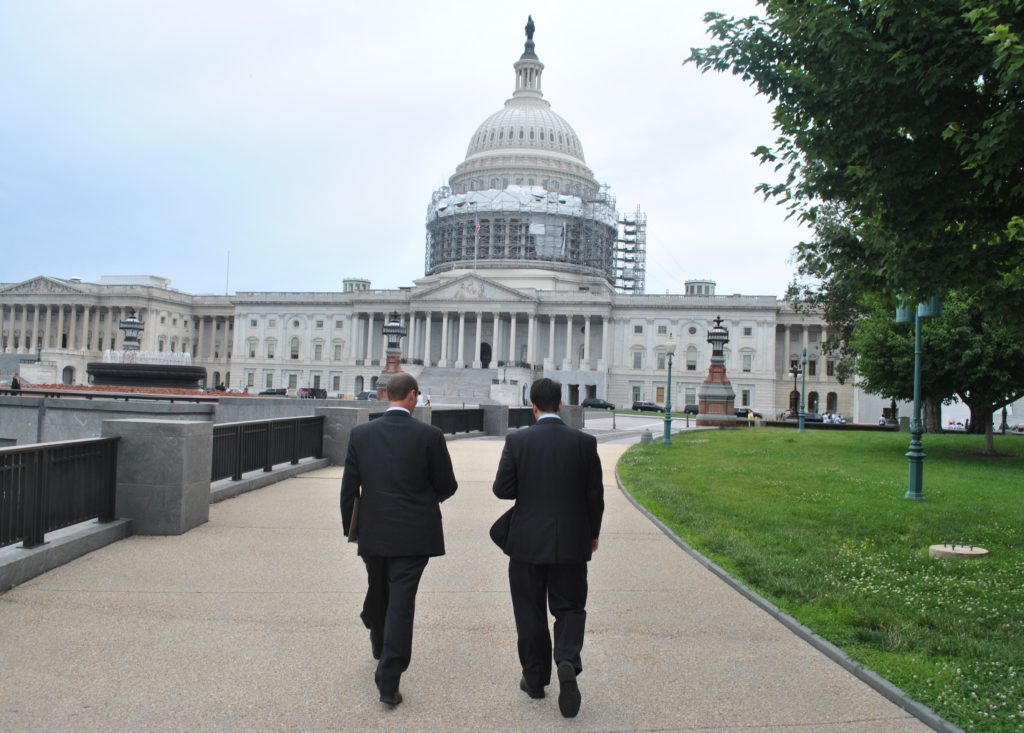
Appropriations season is well underway in the nation’s capital, with the House clearing the way for a bill that would boost funding for the U.S. Department of Agriculture (USDA) and Food and Drug Administration for the next fiscal year, starting on September 30.
The fiscal year (FY) 2020 “minibus” appropriations bill passed this week by the House consists of five bills to fund federal departments, including the Agriculture Appropriations bill. Passage in the House followed debate and passage of the bill in the Agriculture Appropriations Subcommittee and subsequently the full Appropriations Committee earlier this spring. The House bill includes significant wins for sustainable agriculture funding priorities. The National Sustainable Agriculture Coalition (NSAC) championed many of these funding victories, and NSAC continues to fight for the same priorities to be included in the Senate, and ultimately the final, FY 2020 appropriations bills.
The House bill was praiseworthy for its inclusion of increases for sustainable agriculture research, food safety, local and regional food systems, training and outreach for beginning and socially disadvantaged, and other priority food and farm programs. The bill also includes language that would block the Administration’s plans to relocate USDA’s Economic Research Service (ERS) and National Institute of Food and Agriculture (NIFA) more than one thousand miles away from their historic home in the nation’s capital.
Language preventing the move has been included in all versions of the House bill, beginning with the Agriculture Appropriations Subcommittee. The passage of the House minibus, however, marks the first time that the full House has voted on the proposed language. It is also the first time Congress has acted on it since USDA’s announcement of the new site selection. NSAC has long opposed this move by the Administration, and continues – along with our members and allies – to urge the Senate to follow the House’s lead in pushing back against this reckless proposal.
Passage of the House bill is a critical step in the FY 2020 appropriations process, however, major hurdles to getting final spending bills across the finish line in advance of the September 30 deadline remain.
House Bill Passage and Amendments
The House minibus passed on the floor with a near party-line vote of 227 to 194. During bill debate, the House considered more than 30 amendments to the agriculture section of the bill, most of which were adopted in an “en bloc” amendment. The suite of amendments adopted included an additional $5 million for the Sustainable Agriculture Research and Education program and an additional $10 million for the Farm and Ranch Stress Assistance Network above the levels included in the bill passed through the full Appropriations Committee. These proposed increases did not include funding offsets within the bill, and given the lack of agreement on topline numbers, it is yet unclear how any funding increases included in the House bill will ultimately fare in conference negotiations with the Senate and ultimately the White House.
An updated version of NSAC’s appropriations chart to reflect the funding levels included in the House floor passed bill is available here.
Major Questions Remain
Congress and the White House have yet to agree on a budget deal to lift the overall spending caps for discretionary spending in the next two fiscal years. Without a deal, sequestration (automatic across-the board reductions in funding to discretionary programs, activities, and accounts) would set in. Programs susceptible to cuts from sequestration include many of those critical to sustainable food and farming systems.
Given the lack of a deal on overall spending caps, the Senate has not yet moved forward with any of their FY 2020 appropriations bills (including agriculture). While the House has now passed 10 of their 12 spending bills on the floor, the Senate and White House have not been agreed to the House’s topline figures. All the House’s included funding levels, therefore, are subject to change depending on the results of the budget deal and negotiations between the House and Senate-passed bills.
NSAC has urged Congress to substantially raise the non-defense discretionary spending caps and provide support for pressing food and farm needs. Despite attempts over the last several months to reach a budget deal, Congress and the White House have yet to do so. How the rest of the FY 2020 appropriations process plays out, therefore, remains uncertain. There are several different scenarios possible if a deal to lift the caps is made, but the only viable option for getting the critical funding increases included in the House bill across the finish line is a substantial increase to the overall caps for discretionary spending.
Congress is out next week for the July 4 recess, and the clock is quickly running out on the time left to reach a deal before the end of the fiscal year.

